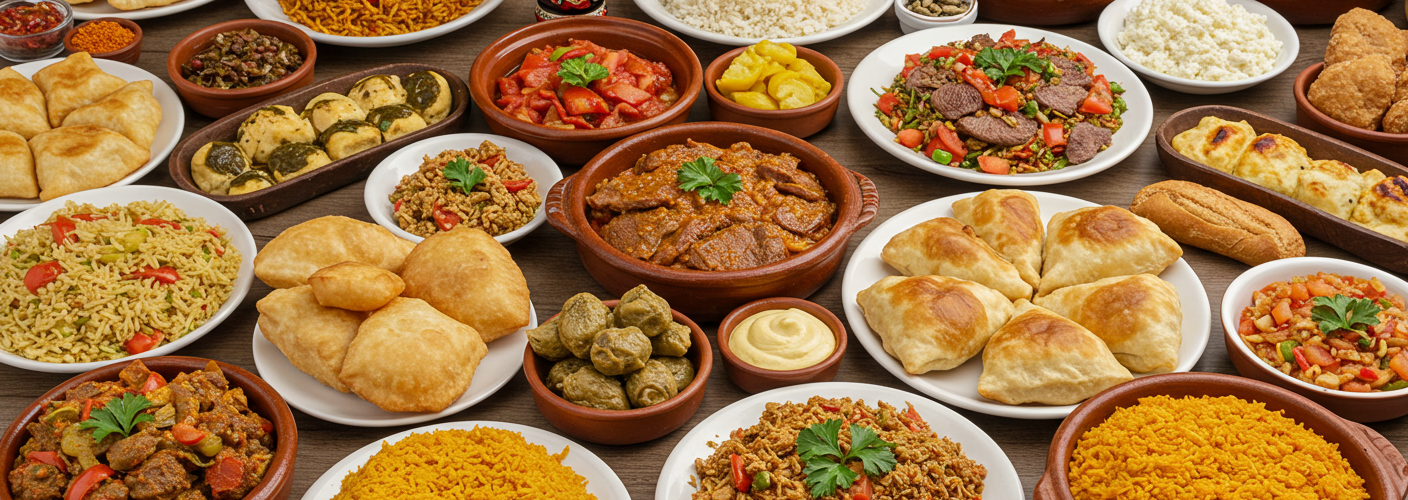Albania, a hidden gem in Southeastern Europe, is rapidly gaining acclaim for its stunning landscapes and rich cultural history. However, one of the country’s most delightful treasures is its food, which offers a unique blend of Mediterranean and Balkan influences. For food enthusiasts eager to explore new flavors, Albanian cuisine provides a delicious and authentic experience.
Traditional Ingredients
Albanian cuisine is characterized by the use of fresh, local ingredients. The country’s distinct geographic features—from the Adriatic and Ionian seas to its mountainous interior—contribute to a diverse array of ingredients. Fresh vegetables, herbs, and grains are staples, alongside high-quality meats, particularly lamb, goat, and pork. Coastal areas are known for their seafood, while the mountainous regions supply an abundance of dairy products.
Popular Dishes
One of the cornerstone dishes of Albania is Tavë Kosi, a flavorful baked dish made with lamb, rice, and a tangy yogurt sauce. This dish beautifully showcases the country’s love for dairy and is often garnished with fragrant herbs. Another traditional favorite is Fërgesë, a hearty meal made with peppers, tomatoes, and cheese, typically served with bread. This dish embodies the rustic charm of Albanian cooking and highlights the importance of regional produce.
Seafood lovers will enjoy Peshk i Freskët, grilled fish that is caught fresh from the Adriatic Sea. Often marinated in olive oil and served with a side of lemon and seasonal vegetables, it represents the simplicity and freshness prevalent in Albanian coastal cuisine.
For those with a sweet tooth, Albanian desserts like Baklava and Qumështor are must-tries. Baklava, known throughout the Balkans, is made of layers of filo pastry filled with nuts and soaked in syrup. Qumështor, on the other hand, is a milk-based cake that offers a creamy delight as a perfect end to any meal.
The Role of Hospitality
In Albania, food is not just about sustenance; it is deeply intertwined with culture and tradition. The hospitality of the Albanian people is legendary, and sharing a meal is a significant part of social life. Visitors are often treated to large feasts that include a variety of dishes, showcasing the host’s generosity. Meals are usually accompanied by Raki, a strong fruit brandy that is a staple in Albanian culture.
Culinary Diversity
Albanian cuisine is also influenced by its neighboring countries. Dishes often reflect the styles of Greek, Italian, and Turkish cuisines, resulting in a unique culinary tapestry. For instance, Sarak is a type of cheese similar to Greek feta, while Italian pastas have found their way into local diets, adapted to suit Albanian palates.
Exploring Local Markets
To truly appreciate Albanian food, a visit to local markets is essential. Vibrant and bustling, these markets are filled with fresh produce, cheeses, cured meats, and homemade breads. Engaging with local vendors can provide insights into traditional cooking methods and the importance of seasonal ingredients in Albanian cuisine.
Conclusion
Albania’s culinary landscape is a fascinating blend of tradition, flavor, and hospitality. As the world begins to discover this stunning country, its food culture is poised to gain recognition. Whether you’re enjoying a simple meal in a local eatery or indulging in a lavish feast at a family gathering, the flavors of Albania offer a warm invitation into the heart of its culture. So, should your travels take you to this enchanting destination, be sure to indulge in the culinary delights that await you—a true taste of Albania!




Add comment